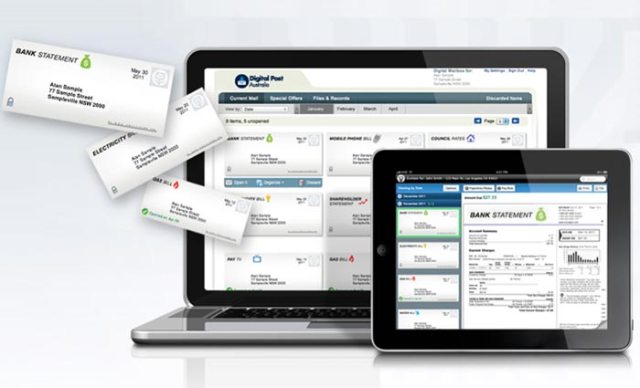
ProPrint Industry Insider Chris Roden recounts his three years on the corporate print buying side, and reveals the dark forces that drive their increasing expectations of printers. Customers want flawless today and better tomorrow.
A quick review of the printing businesses that are no longer with us proves to be both depressing and comforting for those who have survived. Both large and small have gone by the wayside, as well as innovative and archaic. Progressive businesses have fallen alongside those who failed to keep up with technology. Award winners have gone under the same broom as many smaller businesses that few people recognise.
[Related: Printers need to get real about customer service]
The challenge for the survivors is to recognise what you are doing well, develop those things and then improve everything else, because the commercial pressures of competition, technology and cost of capital equipment are not going away. At the same time, customer demands will only get more demanding.
Some years ago while studying marketing our lecturer repeated the often quoted cliché, ‘there is speed (fast-turn-around), quality (beautiful product) and price (low cost) – your customers can choose any two of the three’. I responded, ‘You should try working in the printing industry’. A discussion followed that left me with the profound feeling that the printing industry was on its own when it comes to the demands placed upon it.
Indeed, have you dreamed of being on your clients' side of the fence? Have you longed to be in the position to demand cheaper, faster, better?
Well, I have been there and I can tell you that the grass is no greener. Over the last three years I've spent time in some of Australia's largest FMCG businesses and can report from 'the other side'.
The corporate life – performance agreements with twice yearly reviews; forever increasing demands on productivity, profitability and reporting. The modern corporate employee is processed and homogenised to be an all-round superstar – excelling not only in the tasks for which they were fundamentally employed, but also for corporate citizenship, cultural alignment, safety, service to community, projects delivered beyond their KPIs and the all-important communication with all stakeholders. In times-gone-by, these demands may have been balanced with job security – but not anymore. And, just as we have large customers that need our full attention, so do our customers have people they must answer to – namely their customers and, more often than not, their shareholders.
So in reality, what often seems like unfair expectations of us printers, are in fact no greater than what is expected of them. So what does the modern print/packaging buyer expect of their supplier?
1. Faultless DIFOTIS (Delivery In Full, On Time, In Spec)
During my time with Carter Holt Harvey I was surprised that our FMCG clients took our cartons directly from their warehouse (or the truck!) to their filling line with no quality check or even cursory glance to make sure they were suitable to run. The cartons were expected to be there in the quantity ordered, at exactly the right time and perfect (for their application). If there was any failure of the cartons and their filling lines were slowed or stopped, the cost was transferred back to the supplier.
Do you measure your DIFOTIS? Keep in mind that you may have a great reason for a late delivery and your client may be very understanding and sympathetic, but the fact is, when your goods arrive in your client's warehouse the storeman will certainly record that you delivered late. Inventory systems rarely capture good stories so shades of grey for you become black and white for your customer.
The good news is, that if your DIFOTIS is really good, above 94 per cent, it covers over a multitude of other less important issues, and the customer's critical eye goes onto someone else.
2. Cost Down Trend
I have a problem with this one because I don't want to buy cheaper potatoes if it means that the Tasmanian farmer goes out of business and Coles gets them from Brazil instead. But, whether we like it or not, a fundamental principle of capitalism is that competition drives price downwards, and as a result, we corporately, expect prices to go down.
What this means for your client, is that their general manager sits the procurement department down at the end of each financial year and says ‘next year I want you to spend 10 per cent less and, by-the-way, we are adding 50 new products and purchasing in smaller quantities. Please report back to me where you are going to find the savings’. And, Murphy's Law being what it is, the procurement manager then walks into the operations manager's office and gets told of the latest short delivery of your products. He then types into his smartphone ‘call insert name (your competitor) for cross-quote and negotiate new deal ‘.
Cost-down must be written into the fabric of the modern print business. It must be a deliberate strategy that is clearly backed by procurement, productivity and efficiency gains. It is not a race-to-the-bottom on price, but rather a strategy to affordably meet your client's expectations. It requires a company-wide focus and measurement of meaningful KPIs. This leads to point three.
3. Year-On-Year Improvement
Your customer expects your products and services to be faultless today and better tomorrow.
As sales manager for my family's printing business I set about an analysis of why we lost customers. It is clearly less costly to retain clients than win new ones and can easily be the difference between a good year and a great one. Our hope was to identify areas of failure and fix them. In our case, the results of the analysis only caused frustration. One customer moved on because we missed a delivery date, another because they could buy cheaper elsewhere, another because the contact we had left the business and yet another moved away with no explanation at all. Rather than being able to fix a specific problem, our analysis told us that we had to be engaged in constant improvement in every area of the business.
Does the culture of your business reflect the desire to be better tomorrow than you are today and are you deliberately making it happen? Could you prove it with written targets, data, added services and new business. The good news is, that such a focus, improves profitability, company value and staff morale.
I've found that these principles can be applied to your business, your department or just your specific position. But, just like exercise, the greatest difficulty is making a start and giving it consistent effort. However, the rewards for constant improvement are worth it and before you know it you'll be a piece of your customer's furniture.
Comment below to have your say on this story.
If you have a news story or tip-off, get in touch at editorial@sprinter.com.au.
Sign up to the Sprinter newsletter



